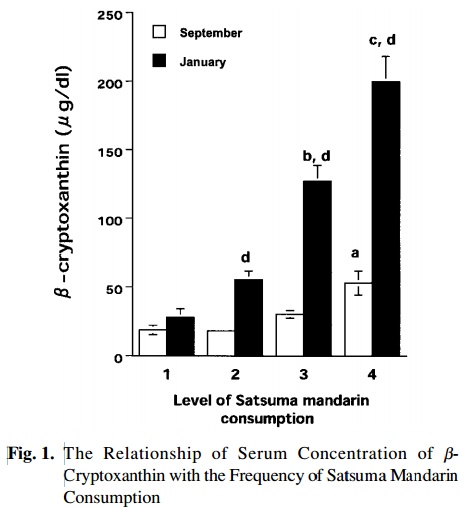Carotenoids are a group of phytonutrients that may have particular health benefits in humans. Carotenoids are synthesised in plants and are absorbed by animals when they eat carotenoid containing plants. Common dietary carotenoids include β-carotene and lycopene, and these are often the most prevalent carotenoids in human plasma. Carotenoids can be oxidised in plants to another group of related phytochemicals called the xanthophylls. Xanthophylls are closely related to the carotenoids both structurally and functionally, and as with carotenoids they are also well absorbed in animals. Common dietary xanthophylls include lutein and its stereoisomer zeaxanthin, as well as β-cryptoxanthin and astaxanthin. Lutein and zeaxanthin are able to accumulate in the eye of animals including humans, where they may protect the tissues from oxidative stress and eye diseases such as cataracts and macular degeneration. Xanthophylls may also accumulate in other tissues and protect them from oxidative stress.
Sources of carotenoids and xanthophylls include yellow, red and orange fruits and vegetables, as well as egg yolks and green leafy vegetables such as spinach. Specific carotenoids and xanthophylls tend to be present in very high concentrations in a limited number of foods. For example the xanthophyll β-cryptoxanthin is found in fruits such as papaya, peach and certain citrus fruits. However, satsumas appear to be a particularly good source of β-cryptoxanthin. Researchers in Japan have shown that plasma levels of β-cryptoxanthin rise significantly when satsuma mandarins are consumed frequently, and that the amount of β-cryptoxanthin in the blood is related to the amount of satsumas in the diet1. Consumption of 4 satsumas per day was enough to raise plasma levels of β-cryptoxanthin to levels significantly higher than subjects who did not consumed satsuma mandarins. Citrus fruit including satsumas may therefore be a significant source of dietary β-cryptoxanthin, which may in turn have health benefits.
RdB

